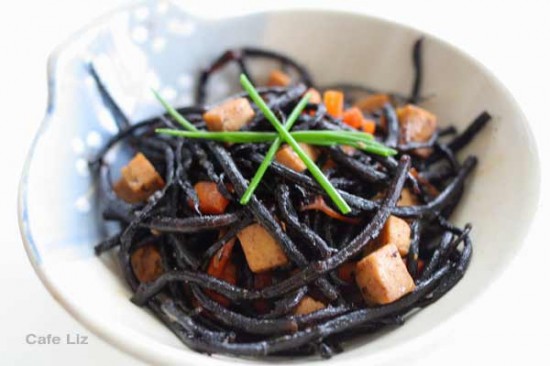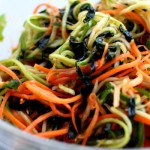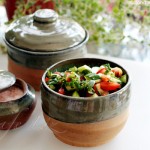
I had the honor of being invited to the semi-annual picnic of the rather small Japanese-Israeli community this week. Aside from the dozens of interesting people and oodles of adorable children were plate after plate of fabulous food — several kinds of tamago, various onigiris and sushi rolls, iced roasted rice tea and uncountable stir-fries. In fact, this was probably the first picnic I’d been to in Israel where only one person brought pitas and hummus (guilty as charged).
Good Japanese food is rather hard to find in Israel, let alone Japanese home cooking — the majority of the restaurants paint themselves as upscale, with prices to match. I think the large majority of the country’s Japanese home cooks were present in the park that afternoon.
Who attends a Japanese-Israeli picnic? Aside from our little group, everyone there was intermarried couples and their children. Needless to say, most people were fluent in both languages and cultures. As one 12-year-old girl explained to us, she was born in Israel, and is completely Israeli, except that she’s Japanese.
So, what does Japanese Israeli picnic food look like? Most of the onigiri were stuffed with tuna or tuna salad, many of the stir-fried rice dishes were western influenced — more vegetables, and one even had parsley on top — and there were kebabs instead of yaki niko. Oh, and the side salads were made of seaweed.

I tried an excellent hijiki salad, and the charming woman who made it, whose name I didn’t catch, explained to me how she made it. This is good, because I’ve had a bag of hijiki for quite a while now, and I’ve never been sure what to do with it.
Her salad contained kombu; I didn’t bother to add it. I would garnish this with bits of green onion or chives, or even … fresh parsley. Yes, I know that’s not very Japanese, but it was a surprisingly good (and interesting) combination.
For two small servings:
10 grams dried hijiki seaweed
about 50 grams tofu
half a carrot
4 teaspoons soy sauce
1 teaspoon mirin (rice wine)
1 1/2 teaspoon sugar
a bit of sesame oil for cooking
Let the hijiki soak for about 15 minutes until it regains its volume. The soaking water can be used to water plants — it’s full of nutrients — or saved for a broth.
Finely slice the tofu and the carrot. Put a bit of oil in a pan, and add the seaweed (without the water), tofu and carrot. Turn up the heat. Add the sauce ingredients — soy sauce, mirin and sugar — and cook until there’s no liquid in the pan.
Serve garnished with herbs.





